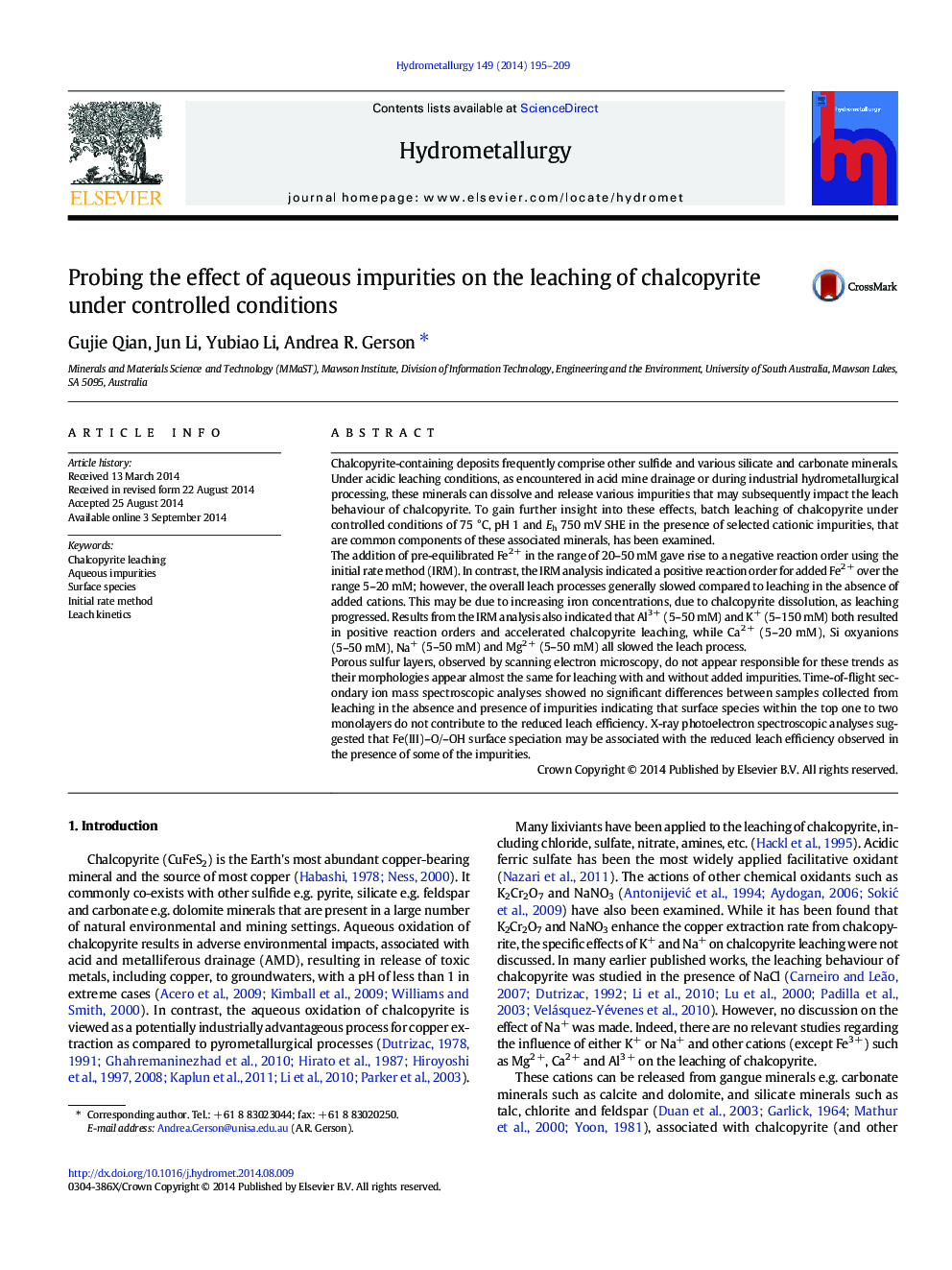| Article ID | Journal | Published Year | Pages | File Type |
|---|---|---|---|---|
| 212257 | Hydrometallurgy | 2014 | 15 Pages |
•Aqueous ionic impurities generally slowed the leach efficiency of chalcopyrite.•The exceptions were Al3 + and K+ which slightly increased the leach efficiency.•Fe2 + addition has contrasting effect on the initial leaching stage.•XPS showed that Fe(III)–O/–OH may be associated with the reduced leach efficiency.
Chalcopyrite-containing deposits frequently comprise other sulfide and various silicate and carbonate minerals. Under acidic leaching conditions, as encountered in acid mine drainage or during industrial hydrometallurgical processing, these minerals can dissolve and release various impurities that may subsequently impact the leach behaviour of chalcopyrite. To gain further insight into these effects, batch leaching of chalcopyrite under controlled conditions of 75 °C, pH 1 and Eh 750 mV SHE in the presence of selected cationic impurities, that are common components of these associated minerals, has been examined.The addition of pre-equilibrated Fe2 + in the range of 20–50 mM gave rise to a negative reaction order using the initial rate method (IRM). In contrast, the IRM analysis indicated a positive reaction order for added Fe2 + over the range 5–20 mM; however, the overall leach processes generally slowed compared to leaching in the absence of added cations. This may be due to increasing iron concentrations, due to chalcopyrite dissolution, as leaching progressed. Results from the IRM analysis also indicated that Al3 + (5–50 mM) and K+ (5–150 mM) both resulted in positive reaction orders and accelerated chalcopyrite leaching, while Ca2 + (5–20 mM), Si oxyanions (5–50 mM), Na+ (5–50 mM) and Mg2 + (5–50 mM) all slowed the leach process.Porous sulfur layers, observed by scanning electron microscopy, do not appear responsible for these trends as their morphologies appear almost the same for leaching with and without added impurities. Time-of-flight secondary ion mass spectroscopic analyses showed no significant differences between samples collected from leaching in the absence and presence of impurities indicating that surface species within the top one to two monolayers do not contribute to the reduced leach efficiency. X-ray photoelectron spectroscopic analyses suggested that Fe(III)–O/–OH surface speciation may be associated with the reduced leach efficiency observed in the presence of some of the impurities.
